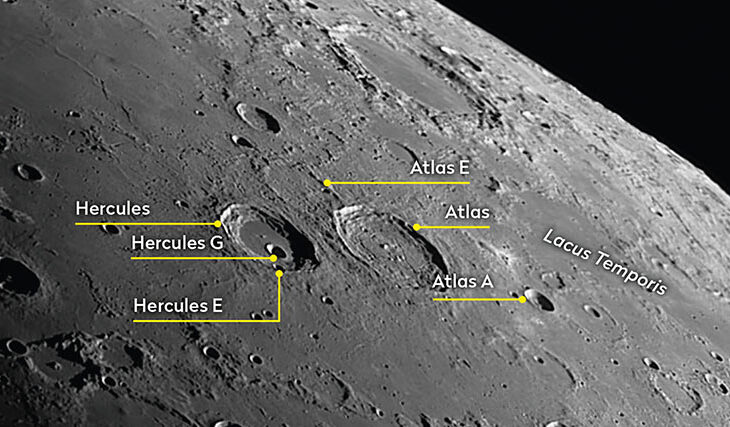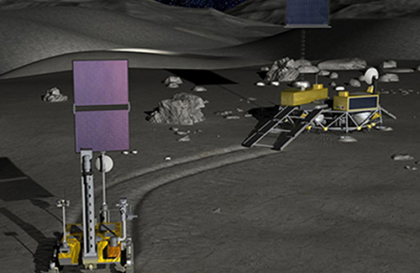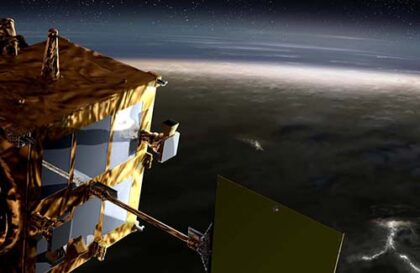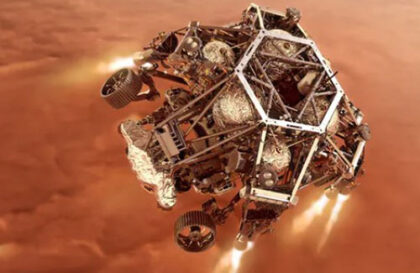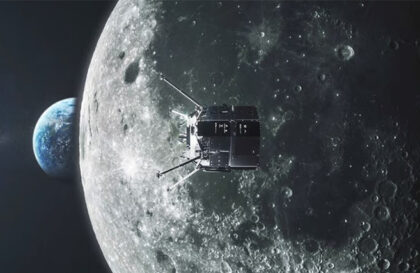What sparked the interest in the crater?
The Atlas crater (diameter 87 km) with cracks at the bottom is of interest to geologists.
After the impact that created Atlas, the crater floor melted. As it cooled, a hard floor formed. The lifting of Atlas caused the floor to rupture, creating cracks.
The cause of the cracks, which look like depressions and indicate a rise in the bottom, remains a mystery.
There are two theories. The first is the slow recovery of the lunar crust after the impact, which can cause uplift and cracks. The second is the intrusion of magma under the crater, raising and destroying the bottom, and creating cracks. Geologists look for signs of volcanic activity when exploring such craters. They are examining LROC (Lunar Reconnaissance Orbiter Camera) images to understand their origins. This camera has been operational since 2009 on the Lunar Reconnaissance Orbiter (LRO) spacecraft and provides high-resolution images of the lunar surface.
Craters with cracks on the bottom have been known on the Moon since the days of lunar orbiters. The cracks in Atlas have wide, flat bottoms similar to depressions, and they record the process of uplifting the crater floor. The question is what caused this rise?
By Timothy Swindle, Professor of Planetary Sciences and Geosciences, University of Arizona
Japanese lunar mission landing site
Atlas Crater, which is located on the near side of the Moon, near Mare Frigoris, was the primary landing site of the Hakuto-R Mission 1.
iSpace’s Hakuto-R Mission 1, launched on December 11, 2022, represented the first private landing on the Moon and the first Japanese probe on its surface. The spacecraft separated from the rocket about 47 minutes after launch at a distance of about 970 kilometers from Earth.
The probe was launched by NASA’s Lunar Flashlight orbiter on a SpaceX Falcon 9 rocket from Cape Canaveral. Initially, in geostationary transfer orbit, the mission gradually raised its orbit through a series of small engine burns until it was eventually captured in orbit around the Moon. The mission entered lunar orbit on March 21.
The developers designed the probe to carry less fuel and more payload, calculating an economical trajectory for it. The flight to the Moon lasted almost 5 months.
However, during the final moments of descent to the lunar surface (the spacecraft was heading towards the Atlas crater) on April 25, 2023, contact with the mission was lost. The iSpace team has confirmed that the $90 million spacecraft likely crashed during the landing. Analysis showed that this was due to an uncontrolled fall of the lander after exhausting its fuel. This situation arose due to an erroneous estimate of the spacecraft’s altitude by the onboard computer, which incorrectly interpreted the radar altimeter data and continued to hover at an altitude of 5 kilometers above the lunar surface.
Final telemetry from the Hakuto R showed the lander in a vertical position on the final approach, with the rate of descent rapidly increasing in the final seconds. The lander ultimately made a hard landing on the lunar surface.
Another unsuccessful landing occurred with the Beresheet lander, built by the Israeli company SpaceIL. It crashed on the surface of the Moon in early 2019.
Hakuto means “white rabbit” in Japanese, an animal often associated with the moon in East Asian mythology.
Before landing, Hakuto R sent us an image of the Earth rising above the Moon’s limb, taken on April 20 during last week’s rare hybrid annular total eclipse. The image shows a tiny black dot of the Moon’s shadow crossing near Australia:
Image credit:
https://www.skyatnightmagazine.com
http://www.milwaukeeindependent.com
https://skyandtelescope.org
https://skyandtelescope.org
